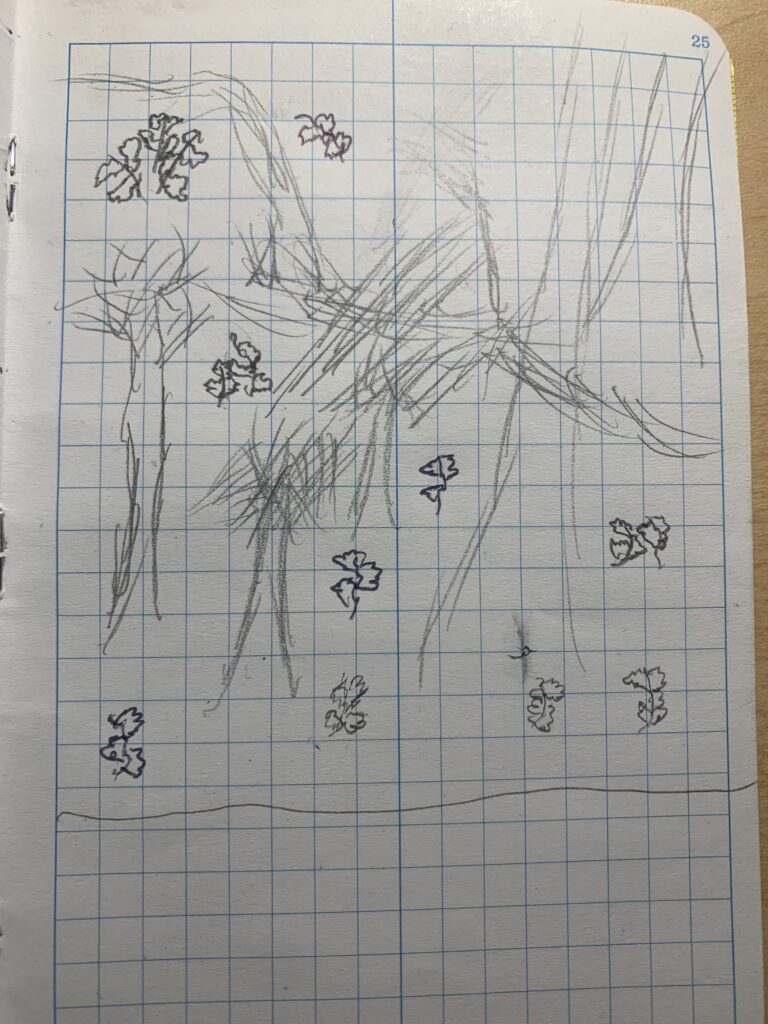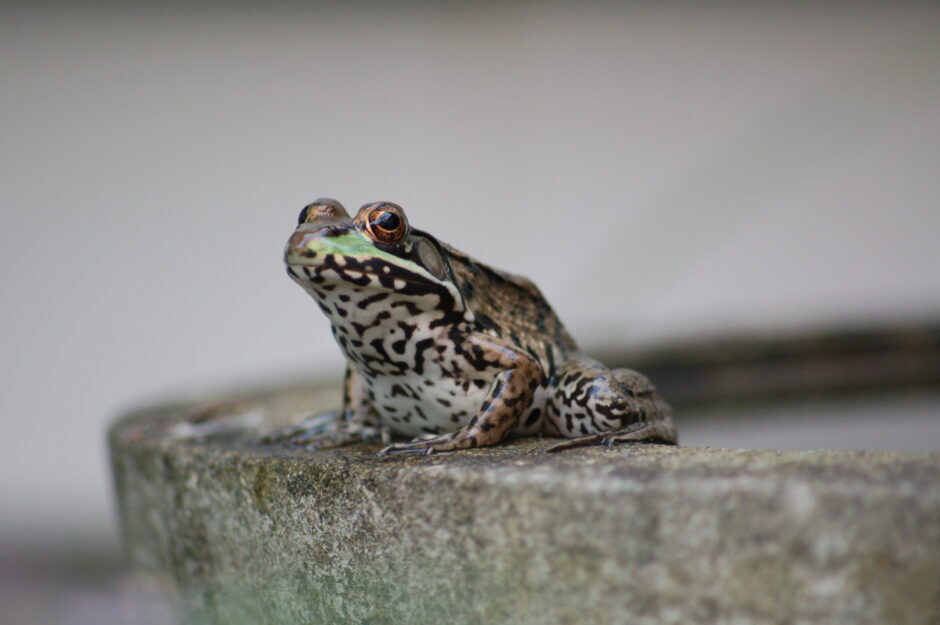As the semester draws to a close, I made my last trip to the phenology site in Centennial Woods. Honestly, it was a bit emotional because I have worked with this place for many months now, and knowing that it was the last time I would use it for this blog signifies how far I’ve come in the first year of UVM. Luckily, tears weren’t shed because I was too busy navigating the giant patches of mud along the trails that formed from the inundating rains the past few days. When I reached my site, I did a final, rough sketch of the “fern forest” that I have come to love looking at.

My site has changed over time in numerous ways. Phenologically, the maples that characterize much of the understory in this spot have gone through the cycle of leaf drop, dormancy, and budding as temperatures dropped and then climbed again. Examining storm-caused changes, high winds throughout the winter months have led to the accumulation of eastern white pine branches in the understory, which I hadn’t noticed when I first visited my phenology site in the fall. The relatively few changes has meant most of the site looks similar to its condition in which I first saw it, reinforcing an aspect of stability that I’ve come to appreciate during a time that has seen numerous changes in my life.
Over time, I’ve become acquainted with the ecological features that define my site and give it character. The first landmark that signals I’ve entered my spot is a huge snag, filled with woodpecker holes, which serves as a visually distinct entity in a spot dominated by the dark bark of eastern white pines. However, the main landmark of my spot is the bed of ferns that carpets much of the hillside and serves as a focal point of my spot. In fact, I love this spot so much that I’ve returned to it during labs for other classes, just so I can enjoy its natural splendor. Smaller features also contribute to the special feeling of my phenology spot, especially the small log bridge that crosses an ephemeral stream.
Nature and culture intertwines here most obviously through the walking trail that exists at the southside of my spot. Centennial Woods is in close proximity to the largest city in the state of Vermont, filled with people who have a strong connection to the nature of the area and who appreciate utilizing natural resources. As such, the path acts as a facilitator of human desire for natural interaction. Additionally, nature and culture collide here because the landscape promotes spiritual self reflection. As trees and shrubs distance oneself from the noise and movement of the greater Burlington area, one has the opportunity to engage in meditation and reflection, and find healing in what nature can bring.
Though I have been coming to the phenology spot for many months now, I do not consider myself part of this place yet. This is because I’ve used this spot expressly for scientific monitoring and investigation. As such, I’ve not formed that emotional bond that seems to be a prerequisite for my connection with a location. In addition, as a first year student, I am still getting to know Burlington, and need more time to truly assimilate this area into my psyche as a place I call home. I am hopeful that as I continue to come back to Centennial Woods over the next 3 years, I will give myself the opportunity to reflect and observe it through a spiritual lens, giving greater attention to its intrinsic significance in my life.
